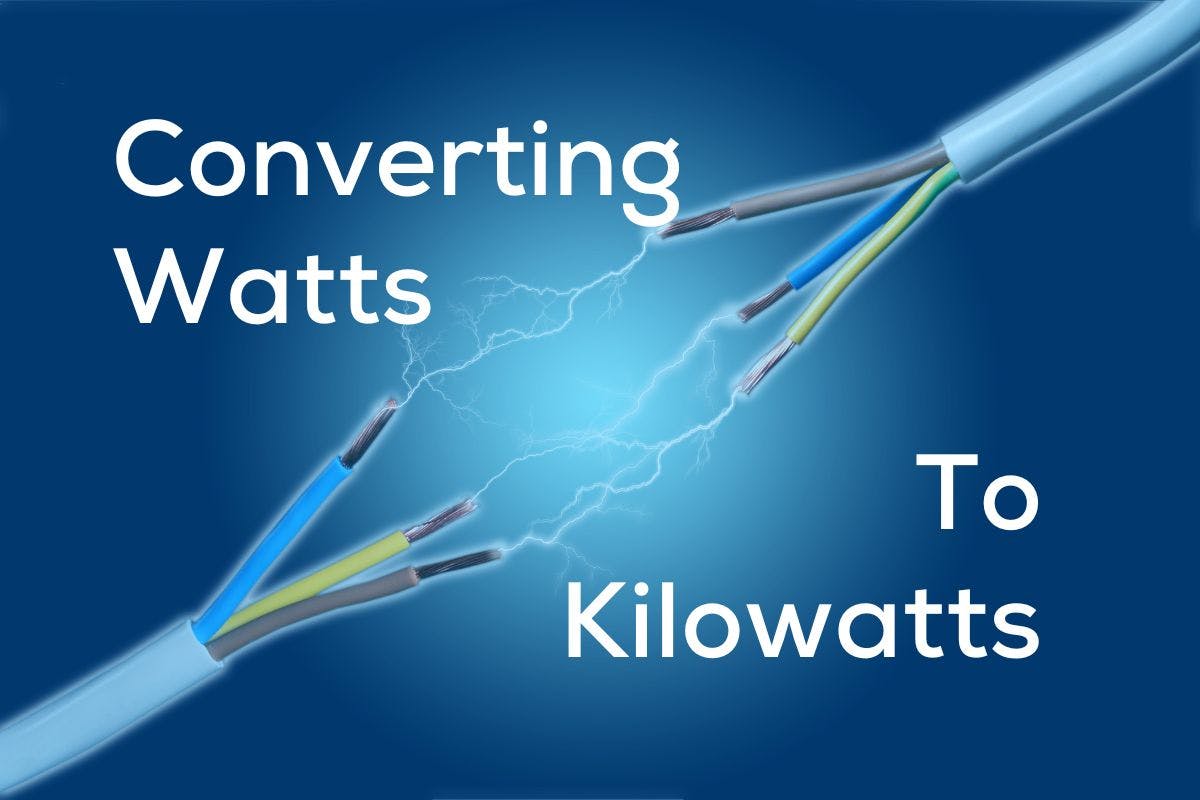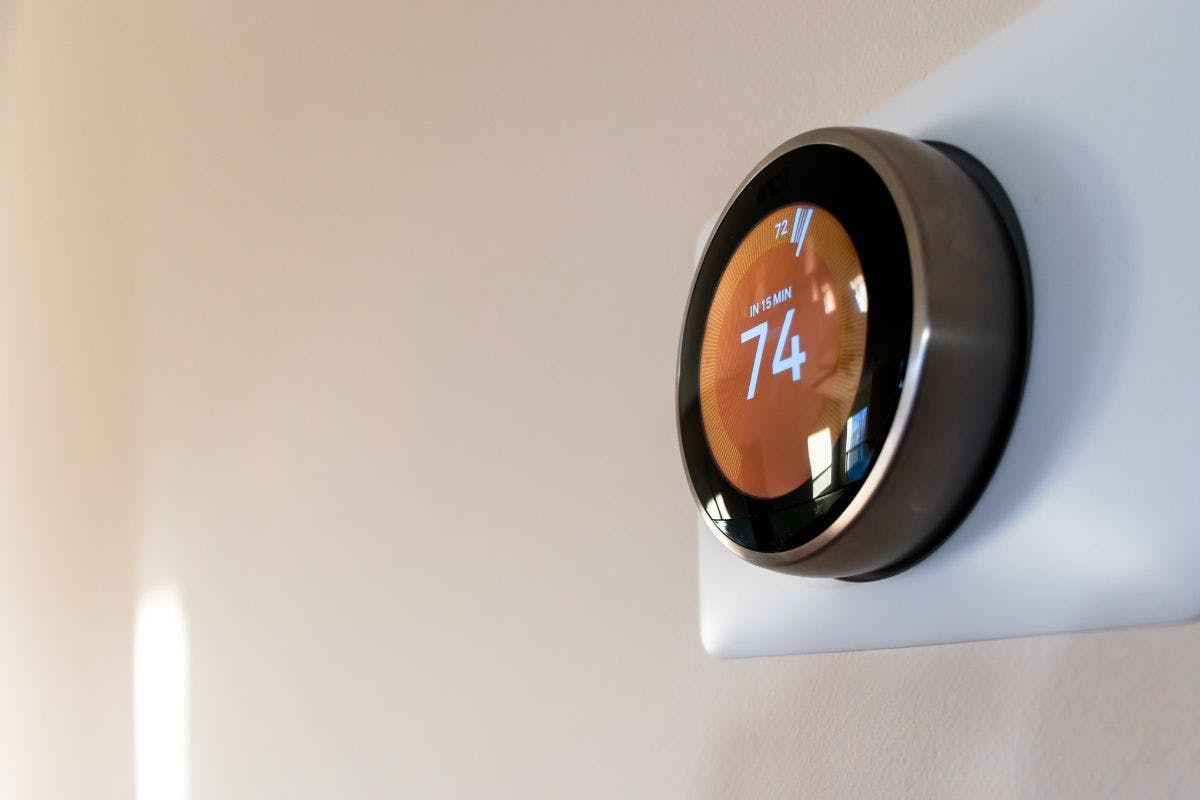How to Convert Watts to Kilowatts: Understanding Key Electricity Terms
Last edited

Author
Andrew Giermak
Solar and Electrification Writer and Editor

Editor
Andrew Blok
Electrification and Solar Writer and Editor

When it comes to your energy bill, maybe you just look at the balance so you know how much to pay. Maybe you look at how much energy you used during the billing period. Maybe you’re lost when it comes to demand (measured in kilowatts) and consumption (measured in kilowatt-hours).
What do those measurements actually mean? And how can understanding those terms help you take control of your home energy use? Here’s what you need to know.
See how much you can save by going solar with Palmetto
What Are Watts and Watt-hours?
Watts are simply a metric system unit of power. Electric power can be generated, moved around, and consumed and it can be described in watts. If you still have old incandescent light bulbs around, they might be rated 40, 60, or 100 watts. That bulb uses 60 watts of electric power to run. A home’s central AC unit can use 3,000-5,000 watts.
A watt-hour is the amount of energy equivalent to one watt generated, moved, or consumed in an hour. Turning on a one-watt lightbulb for one hour would use one watt-hour of electricity. Turning on two two-watt light bulbs for 30 minutes, or a 60-watt light bulb for one minute, would also use one watt-hour. If an oven runs at 4,000 watts for an hour, it’s using about 4,000 watt-hours.
Here’s what typical appliances use, according to one electric utility company and the cost of running them for one hour, given the national average electric rate of 16.44 cents per kilowatt-hour in February 2025.
| Appliance | Energy consumption per hour | Cost to run 1 hour |
|---|---|---|
| Central air conditioner | 3 kWh | 49.32 cents |
| Ceiling fan | .025-.075 kWh | 1.23 cents or less |
| Microwave | 1.44 kWh | 23.67 cents |
| Vaccuum | .75 kWh | 12.33 cents |
| Electric resistance baseboard heating (6 feet) | 1.5 kWh | 24.66 cents |
How Do You Convert Watts to Kilowatts?
As Americans, we don’t do much in the metric system, but it’s actually pretty straightforward. So is converting watts to kilowatts. One kilowatt (kW) is 1,000 watts.
To convert from watts to kilowatts, simply divide the number of watts by 1,000.
Watts / 1,000 = kilowatts
For example, if a solar array is made up of 20 panels with each panel generating 400 watts of power, its capacity is 8,000 watts or 8 kW.
To convert from kilowatts to watts, multiply the number of kilowatts by 1,000.
Kilowatts x 1,000 = watts
A central air conditioner might consume 3-5 kilowatts, or 3,000-5,000 watts.
After watts and kilowatts you can go to megawatts (1,000,000 watts) and gigawatts (1,000,000,000 watts).
How Do You Convert Watt-hours to Kilowatt-hours?
Converting watt-hours to kilowatt-hours uses the same process: Divide the number of watt-hours by 1,000.
Watt-hours / 1,000 = kilowatt-hours
To convert from kilowatt-hours to watt-hours, multiply the number of kilowatt-hours by 1,000.
Kilowatt-hours x 1,000 = watt-hours
A ton more information on all the costs, savings, and financial considerations of solar for your property can be found on Palmetto’s web site. This page also gives a state-by-state chart with the average system size in kilowatts and estimated savings, long-term and short-term.
See how much you can save by going solar with Palmetto
Kilowatt-hours and Your Electric Bill
When you look at your electric bill, you see a total of kilowatt-hours, or kWh, often in the range of 700-1,200 kWh. The average American home uses about 900 kWh a month, as of 2022 according to the U.S. Energy Information Administration. This figure is the electric company totaling the energy used by everything in your house for the month. Your consumption in kWh is multiplied by your electric rate to calculate how much you owe each month.
If you’re looking to reduce that amount, it’s important to think about the watts or kilowatts different systems or appliances use, often called a watt rating. It’s also important to think about the duration and frequency of how you use them.
For instance, a coffee maker and a space heater both run at about 1kW. You might use the coffeemaker a few minutes at a time, a few times a day—depending on your need for coffee. So the 1kW capacity of the coffee maker isn’t usually adding a full kWh to your monthly bill. If you run the space heater for two hours, a more likely scenario, it’s adding 2 kWh to your bill in one shot.
HVAC systems use more than half of home’s annual energy consumption in the U.S, 52% in 2020 according to the U.S. Energy Information Administration. Heaters and AC units are major energy hogs and run for long stretches of time, especially for, say, home heating in a Michigan January or the AC in Florida, well, year-around.
If you’re interested in ways you can reduce your energy consumption at home, and maybe save some money in the process, Palmetto’s solar savings calculator is one easy place to start. You can also reach out to a solar advisor or read more about energy efficiency.
Watts and Kilowatts FAQs
What’s the difference between a kilowatt and kilowatt-hour?
A kilowatt is a measurement of power. A kilowatt-hour is a measurement of energy equal to one kilowatt being generated, transferred, or consumed per over hour. If an appliance runs at 1,000 watts, or 1 kW, it can consume 1kWh in an hour. If it runs for a half-hour, it will consume 0.5 kWh and add that to your electric bill.
How are solar panel systems sized?
Solar panel systems are usually measured in kilowatts, which measures how much electricity they can produce at peak production.
There are a number of factors which go into finding the right size system for your home. In most cases, we’re looking to get to a 100%, or slightly higher, energy offset. A new solar system should meet your home’s current energy consumption requirements. The size can also be affected by design constraints, roof size, local regulation, available sunlight, and more.


